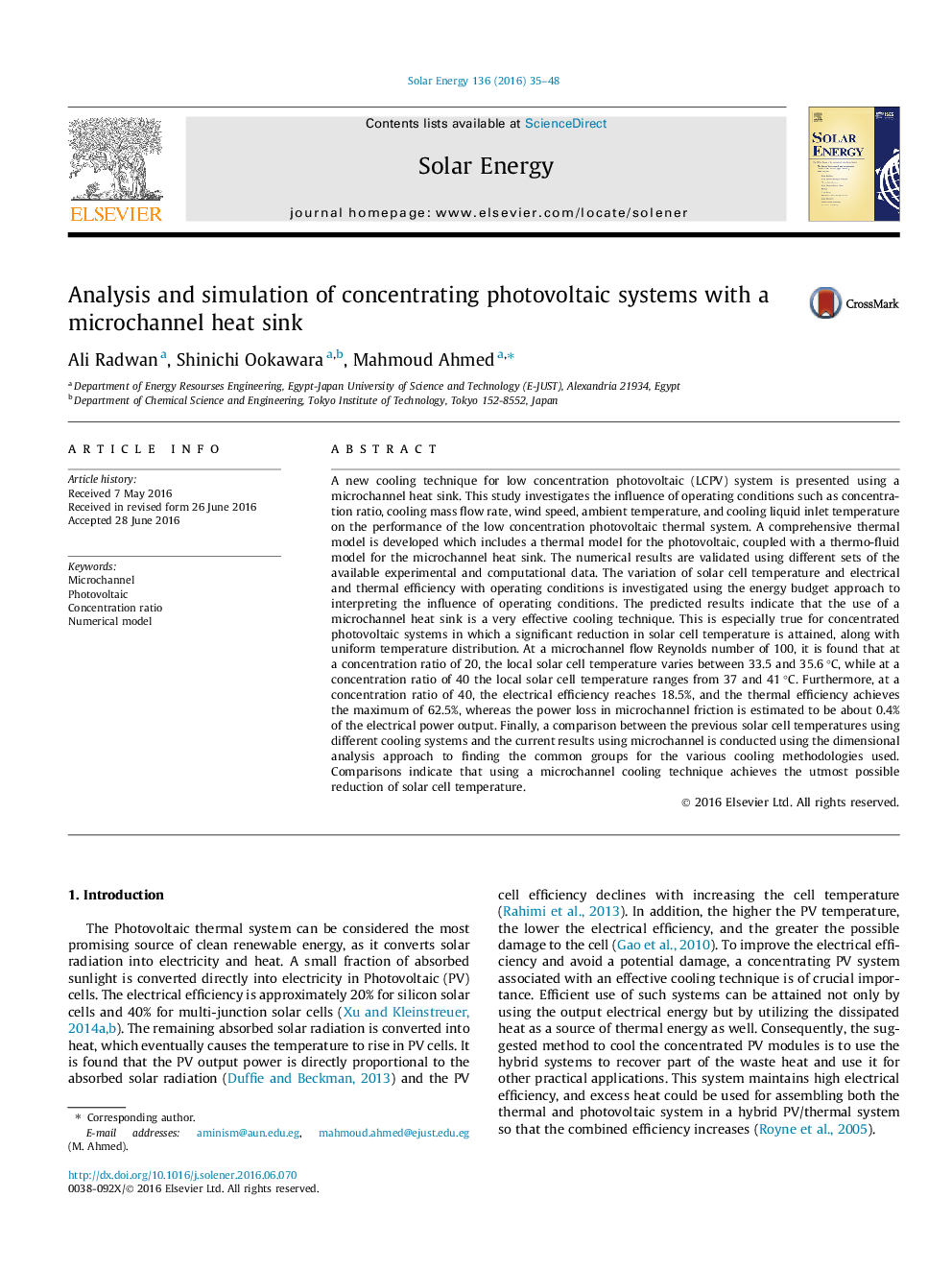| کد مقاله | کد نشریه | سال انتشار | مقاله انگلیسی | نسخه تمام متن |
|---|---|---|---|---|
| 7936372 | 1513082 | 2016 | 14 صفحه PDF | دانلود رایگان |
عنوان انگلیسی مقاله ISI
Analysis and simulation of concentrating photovoltaic systems with a microchannel heat sink
ترجمه فارسی عنوان
تجزیه و تحلیل و شبیهسازی سیستمهای فتوولتائیک متمرکز با یک گرمایش میکرو کانال
دانلود مقاله + سفارش ترجمه
دانلود مقاله ISI انگلیسی
رایگان برای ایرانیان
کلمات کلیدی
موضوعات مرتبط
مهندسی و علوم پایه
مهندسی انرژی
انرژی های تجدید پذیر، توسعه پایدار و محیط زیست
چکیده انگلیسی
A new cooling technique for low concentration photovoltaic (LCPV) system is presented using a microchannel heat sink. This study investigates the influence of operating conditions such as concentration ratio, cooling mass flow rate, wind speed, ambient temperature, and cooling liquid inlet temperature on the performance of the low concentration photovoltaic thermal system. A comprehensive thermal model is developed which includes a thermal model for the photovoltaic, coupled with a thermo-fluid model for the microchannel heat sink. The numerical results are validated using different sets of the available experimental and computational data. The variation of solar cell temperature and electrical and thermal efficiency with operating conditions is investigated using the energy budget approach to interpreting the influence of operating conditions. The predicted results indicate that the use of a microchannel heat sink is a very effective cooling technique. This is especially true for concentrated photovoltaic systems in which a significant reduction in solar cell temperature is attained, along with uniform temperature distribution. At a microchannel flow Reynolds number of 100, it is found that at a concentration ratio of 20, the local solar cell temperature varies between 33.5 and 35.6 °C, while at a concentration ratio of 40 the local solar cell temperature ranges from 37 and 41 °C. Furthermore, at a concentration ratio of 40, the electrical efficiency reaches 18.5%, and the thermal efficiency achieves the maximum of 62.5%, whereas the power loss in microchannel friction is estimated to be about 0.4% of the electrical power output. Finally, a comparison between the previous solar cell temperatures using different cooling systems and the current results using microchannel is conducted using the dimensional analysis approach to finding the common groups for the various cooling methodologies used. Comparisons indicate that using a microchannel cooling technique achieves the utmost possible reduction of solar cell temperature.
ناشر
Database: Elsevier - ScienceDirect (ساینس دایرکت)
Journal: Solar Energy - Volume 136, 15 October 2016, Pages 35-48
Journal: Solar Energy - Volume 136, 15 October 2016, Pages 35-48
نویسندگان
Ali Radwan, Shinichi Ookawara, Mahmoud Ahmed,
